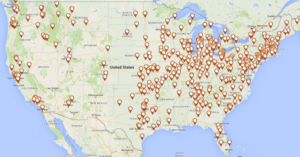Forty percent of mammalian species are rodents. There are about 2,277 species of rodents. They are one of the most abundant creatures on this planet. Rodents are found in vast numbers on all continents except Antarctica, mhttp://en.wikipedia.org/wiki/Specieost islands, and in all habitats except oceans. Nearly all rodents share the characteristic of dentition highly specialized for gnawing. This specialization gives rodents their name from the Latin, rodere, to gnaw. During gnawing, the incisors grind against each other, wearing away the softer dentine, leaving the enamel edge as the blade of a chisel. This ‘self-sharpening’ system is very effective and is one of the keys to the enormous success of rodents. They can survive in the worst possible conditions too. Their success is probably due to their small size, short breeding cycle, and ability to gnaw and eat a wide variety of foods. Rodents are important in many ecosystems because they reproduce rapidly, and can function as food sources for predators, mechanisms for seed dispersal, and disease vectors. Humans use rodents as a source of fur, as pets, as model organisms in animal testing, for food, and even for detecting land mines as they have an acute sense of smell. Also, their success rates in such operations are nearly 100%. Due to the wide diversity of their characteristics, some of which are considered uncommon or unique amongst mammals, rodents are used widely in research.
But these creatures spread havoc in all areas of life owing to their continuous gnawing. Recently the damage incurred due to this has increased manifold. The most horrifying incident that has come to light recently is that of a little girl attacked by rats in her very home the place where children think they are the safest. Becky Evans of Daily News U.K reported on 7th March 2013 the hair rising tale of seven-year-old Francesca Williams who was bitten by a foot long rat while in her merry sleep. The rat bit the girl on her face and arms before she could even realize what had happened. The unprecedented incident left the girl traumatized to the point where she couldn’t sleep in her own bed for almost a week.
These rodents know no discrimination while selecting their targets. They can attack the common man as well as highly placed Govt. officials and politicians as was aptly proved in a recent attack. On 22nd April, 2013 a news channel Soweton Live reported that at 100 Plein Street, one of the buildings in the parliamentary precinct, rats wreaked havoc as they chewed telephone wires and left even left droppings on an official’s desk. Neglecting up gradation of the building was believed to be the cause of the infection. Poison traps were promptly set up to counter the infestation. But the damage was already done.
Having said that rats are not the only rodents which are capable of causing damage. David Maccar on 12th April, 2013 reported that an angler was killed by a Beaver a kind of rodent while on a fishing trip to Belarus. Beavers are the 2nd largest rodents in the world. Beaver is basically a nocturnal semi-aquatic rodent having very powerful front teeth. Beavers have two distinct species the North American beaver (Castor Canadensis) (native to North America) and Eurasian beaver. The victim was bitten by the rodent while trying to click its picture. The rodent bit him on the thigh severing an artery in the process which led to heavy blood loss and consequent death.
A new problem is emerging which needs our immediate attention. It is that of mutant rats. This has come to light as we see Iran struggling to treat its rat problem. The problem has reached epic proportions owing to mutant rats to the levels that snipers are being deployed at night to kill the rats. Giant rats that have been flushed out of their nests by melting snow are the focus of a renewed extermination effort in the Iranian capital, according to several reports. Some of the rodents reportedly weigh as much as 11 pounds. The Iranian scientists postulate that a genetic mutation seems to have occurred in the rats owing to the chemicals and radiation that they have been exposed to earlier. Attempts to kill the earlier generations of these rats with toxic chemicals is believed to have triggered this mutation which would have normally taken millions of years to evolve and develop. The result has been catastrophic as these rats now weigh 5-6 kilos instead of the earlier 60gm thus making it more difficult to capture them by the conventional means. Although some scientists express disbelief regarding the existence of these mutated rats they all seem to agree on the fact that some rats species have become resistant to traditional poisons. In 2012, a researcher in Britain published findings that estimated 75 percent of rats in West England was resistant to rodenticide.
Thus we have seen those rodents true to the title are perpetrators of misery and suffering worldwide. Also increasing number of species are becoming resistant to the traditional poisons. Thus the time has come to develop an out of the box approach and find new innovative ways of handling the rodent menace.
To eradicate this problem we at C Tech Corporation have come up with a viable solution. We have come up with a product named Rodrepel®™.
Rodrepel®™ is an extremely low toxicity and extremely low hazard, and environmentally safe anti-rodent additive for masterbatches specially developed for a range of polymeric and coating applications including films, wires, and cables. It is also effective in case the target species is birds and other animals. It is compatible with nearly all polymeric bases such as PVC, LDPE, HDPE etc.
It is also available in lacquer and liquid form and can be easily coated onto an application to repel the rodents. The best part about this product is that it works on the mechanism of repellence and does not kill the target species. i.e. rodents, thus being in accordance with the need of the century, Sustainability and green chemistry.
Contact us at technical.marketing@ctechcorporation.com if you’re facing problems with rodents and get best remedies to combat the pest menace.
Also, visit our websites:
http://www.ctechcorporation.com/
http://www.rodrepel.com/
http://www.termirepel.com/
http://www.combirepel.com/
Follow our Facebook pages at:
1] https://www.facebook.com/Combirepel-411710912249274/
2] https://www.facebook.com/Termirepel-104225413091251/
3] https://www.facebook.com/Rodrepel-120734974768048/
Follow us on our Twitter pages at:
1] https://twitter.com/rodrepel
2] https://twitter.com/termirepel
3] https://twitter.com/combirepel

 In northwestern India, you’ll find the city of Deshnoke, home to a place of worship called the Karni Mata Temple. What’s interesting about this temple — and what makes it a fitting addition to the list — is that it’s positively packed with rats. Some 20,000, in fact. Not only are they welcomed, but they’re also worshipped.
In northwestern India, you’ll find the city of Deshnoke, home to a place of worship called the Karni Mata Temple. What’s interesting about this temple — and what makes it a fitting addition to the list — is that it’s positively packed with rats. Some 20,000, in fact. Not only are they welcomed, but they’re also worshipped. Rat Island, part of the Aleutian Islands, is just one example of an island habitat devastated by invasive rats. About 90 percent of the world’s islands have been overrun by rodent stowaways, which can spell disaster for native species especially seabirds.
Rat Island, part of the Aleutian Islands, is just one example of an island habitat devastated by invasive rats. About 90 percent of the world’s islands have been overrun by rodent stowaways, which can spell disaster for native species especially seabirds.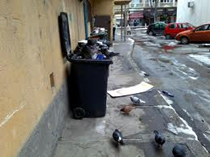 Rats show no respect for famed romantic locales, either. In 2008, Paris officials estimated the city’s rat population had reached 8 million, and since only about 2 million people make their homes in Paris proper, that meant there were about four rats pounding the pavement for every Parisian.
Rats show no respect for famed romantic locales, either. In 2008, Paris officials estimated the city’s rat population had reached 8 million, and since only about 2 million people make their homes in Paris proper, that meant there were about four rats pounding the pavement for every Parisian.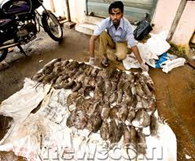 The sprawling metropolis plays host to tens of millions of rats, which carry the disease via their fleas and hence pose a danger to the city’s population.
The sprawling metropolis plays host to tens of millions of rats, which carry the disease via their fleas and hence pose a danger to the city’s population.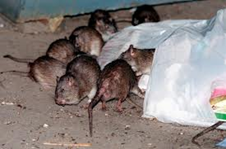 Like many densely populated areas, New York City has a prevalence of rats. Politicians and health authorities actively pursue policies and programs to manage the rat population. The exact number of rats is unknown, but it is estimated that there are at least as many rats as people. The city’s rat population is dominated by the Brown rat and Black rat.
Like many densely populated areas, New York City has a prevalence of rats. Politicians and health authorities actively pursue policies and programs to manage the rat population. The exact number of rats is unknown, but it is estimated that there are at least as many rats as people. The city’s rat population is dominated by the Brown rat and Black rat.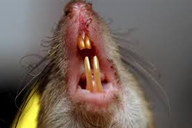 Rats like to live where people live. They quickly adjust to the neighborhood. Rats can thrive on just an ounce of food and water daily, so when they enter a neighborhood and gain access to meat, fish, vegetables, and grains, they will stay. Rats prefer to feed in and around homes, restaurants, and businesses. But they will settle for scraps from trash bags and cans, private yards and what they find at the community refuse disposal and transfer station. Rats get the shelter they need from tall weeds and grass, fences and walls, rubbish piles and abandoned appliances.
Rats like to live where people live. They quickly adjust to the neighborhood. Rats can thrive on just an ounce of food and water daily, so when they enter a neighborhood and gain access to meat, fish, vegetables, and grains, they will stay. Rats prefer to feed in and around homes, restaurants, and businesses. But they will settle for scraps from trash bags and cans, private yards and what they find at the community refuse disposal and transfer station. Rats get the shelter they need from tall weeds and grass, fences and walls, rubbish piles and abandoned appliances. A gas leakage is among the most feared human calamities of all time. Be it the poisonous gas leakages, the cooking gas leakages or the petroleum gas leakages. Each and every gas leakage brings with it the insurmountable wreckage of life and surroundings. There is no need to give an introduction into the world of grief provided by gas leakages. Let’s have a look at one such incident.
A gas leakage is among the most feared human calamities of all time. Be it the poisonous gas leakages, the cooking gas leakages or the petroleum gas leakages. Each and every gas leakage brings with it the insurmountable wreckage of life and surroundings. There is no need to give an introduction into the world of grief provided by gas leakages. Let’s have a look at one such incident.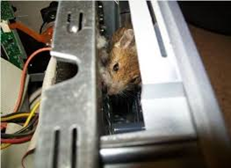 Mandhare said, “The petroleum company has informed us that the rubber tube was bitten by a mouse and had a 2mm hole. Probably, Sunita did not notice the hole. Also, the ventilation in the house was poor as the kitchen window was closed and the door was locked. However, the cylinder and regulator were intact” .
Mandhare said, “The petroleum company has informed us that the rubber tube was bitten by a mouse and had a 2mm hole. Probably, Sunita did not notice the hole. Also, the ventilation in the house was poor as the kitchen window was closed and the door was locked. However, the cylinder and regulator were intact” .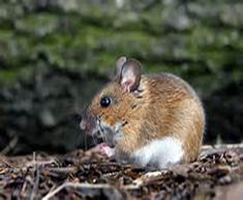 The number of hotels infested by rodents is increasing day by day. The adverse impacts of such invasions by these notorious pests not only affect the hotel owners but also the travelers. Hotels have been facing problems due to rodents since long, but the use of appropriate measures to get rid of them is rarely seen.
The number of hotels infested by rodents is increasing day by day. The adverse impacts of such invasions by these notorious pests not only affect the hotel owners but also the travelers. Hotels have been facing problems due to rodents since long, but the use of appropriate measures to get rid of them is rarely seen.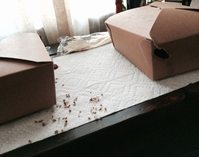 In hotels, specific problem areas include poorly sealed heating and air conditioning ducts.
In hotels, specific problem areas include poorly sealed heating and air conditioning ducts.